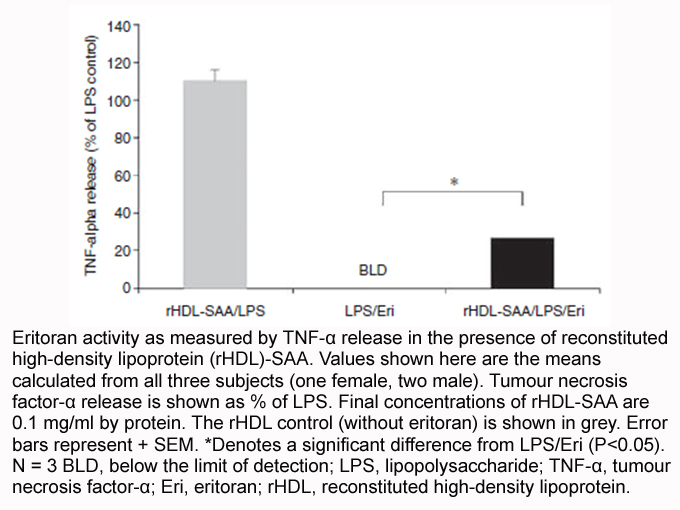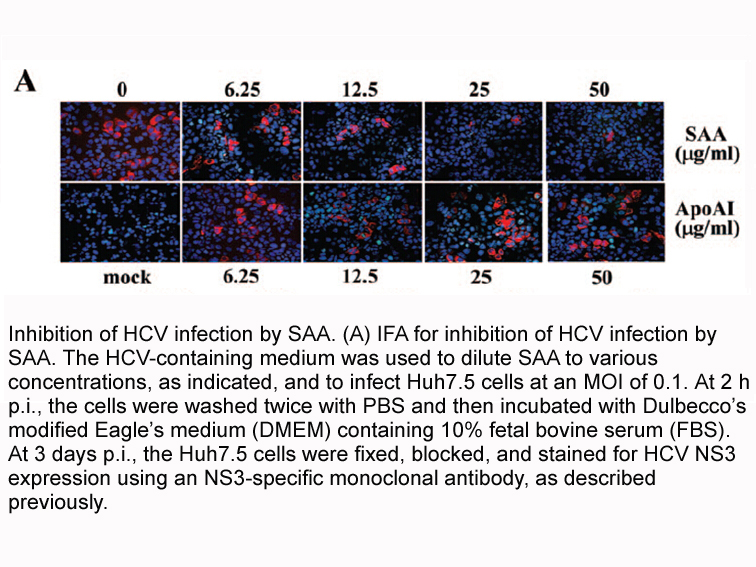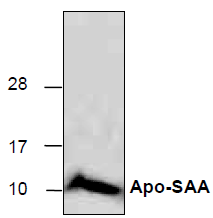Apo-SAA, human recombinant protein
Serum amyloid A protein which belongs to the SAA family is encoded by the SAA gene in humans. It is expressed by the liver and secreted in plasma. Serum amyloid A is the major acute phase reactant and apolipoprotein of the HDL complex. Elevated serum SAA protein levels may be associated with lung cancer. The level of Apo-SAA, normally 1-5 μg/ml in plasma, increases 500-1000 fold within 24 hours of an inflammatory stimulus and, under these conditions, is the most abundant HDL Apo-lipoprotein. Recombinant human Apo-SAA1 is an 11.7 kDa protein containing 104 amino acid residues.
|
Gene ID |
6288 |
|
Accession # |
P0DJI8 |
|
Alternate Names |
MGC111216, PIG4, TP5314 |
|
Source |
Escherichia coli. |
|
M.Wt |
Approximately 11.7 kDa, a single non-glycosylated polypeptide chain containing 104 amino acids. |
|
AA Sequence |
RSFFSFLGEA FDGARDMWRA YSDMREANYI GSDKYFHARG NYDAAKRGPG GVWAAEAISN ARENIQRFFG RGAEDSLADQ AANEWGRSGK DPNHFRPAGL PEKY |
|
Appearance |
Sterile Filtered White lyophilized (freeze-dried) powder. |
|
Stability & Storage |
Use a manual defrost freezer and avoid repeated freeze-thaw cycles. - Refer to lot specific COA for the Use by Date when stored at ≤ -20 °C as supplied. - 1 month, 2 to 8 °C under sterile conditions after reconstitution. - 3 months, -20 to -70 °C under sterile conditions after reconstitution. |
|
Formulation |
Lyophilized from a 0.2 μm filtered concentrated solution in 20 mM Tris-HCl, pH 9.0, 150 mM NaCl. |
|
Reconstitution |
We recommend that this vial be briefly centrifuged prior to opening to bring the contents to the bottom. Reconstitute in sterile distilled water or aqueous buffer containing 0.1 % BSA to a concentration of 0.1-1.0 mg/mL. Stock solutions should be apportioned into working aliquots and stored at ≤ -20 °C. Further dilutions should be made in appropriate buffered solutions. |
|
Biological Activity |
Fully biologically active when compared to standard. The biological activity determined by its ability to down-regulate lipid biosynthesis in aortic smooth muscle cells. The effective concentration was found to be 4 μM. |
|
Shipping Condition |
Gel pack. |
|
Handling |
Centrifuge the vial prior to opening. |
|
Usage |
For Research Use Only! Not to be used in humans. |
Quality Control & DataSheet
- View current batch:
-
Purity > 98 % by SDS-PAGE and HPLC analyses.
- Datasheet
Related Biological Data

Related Biological Data









